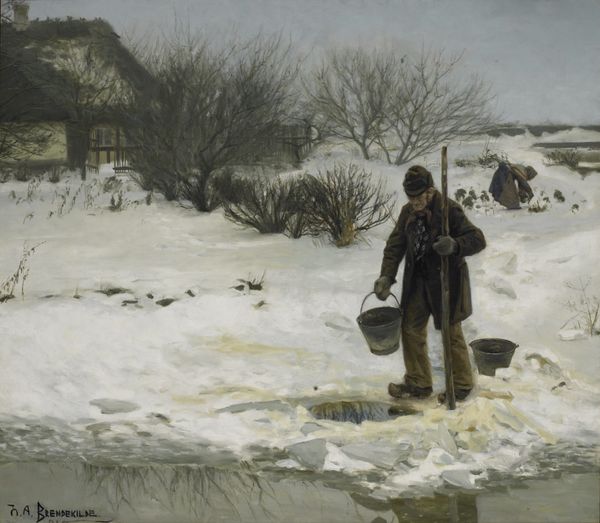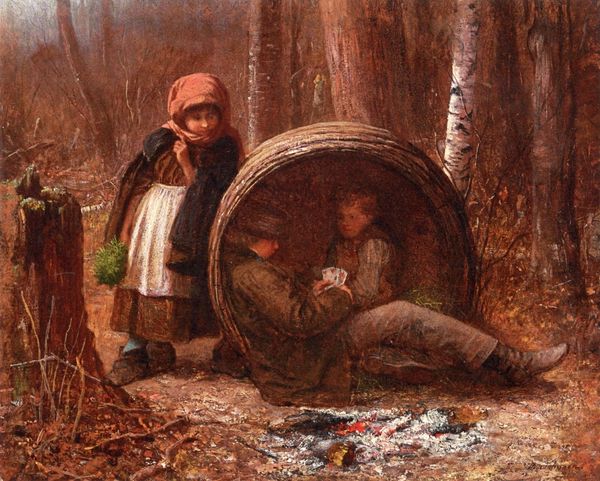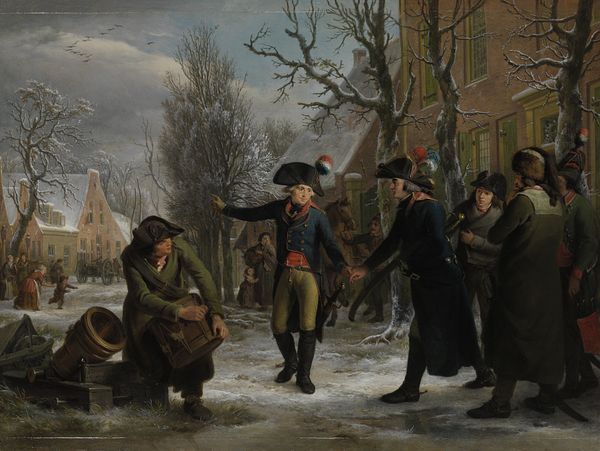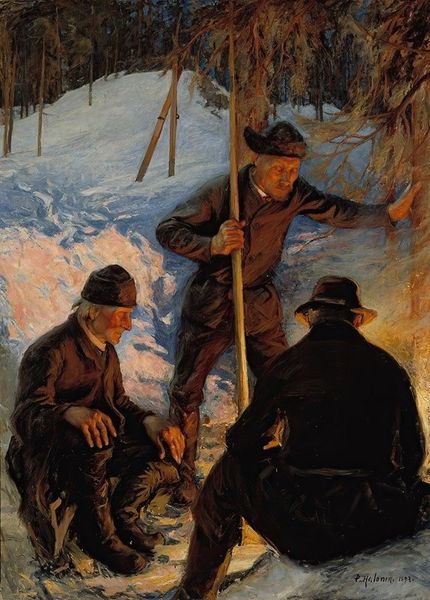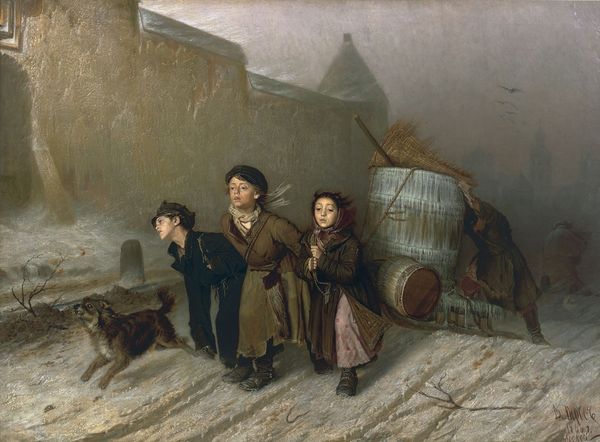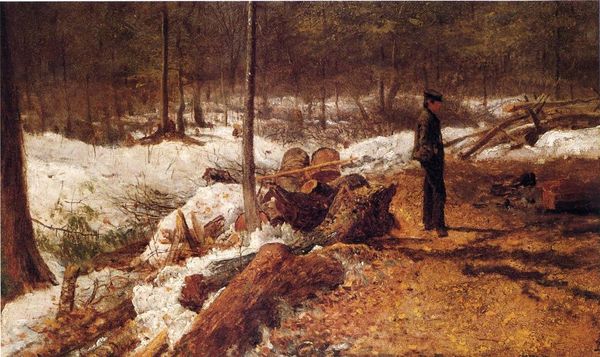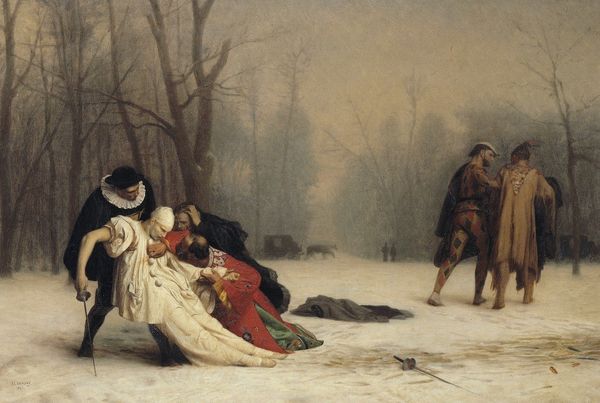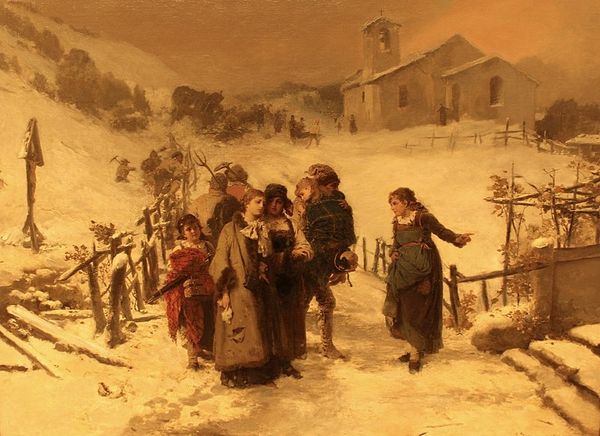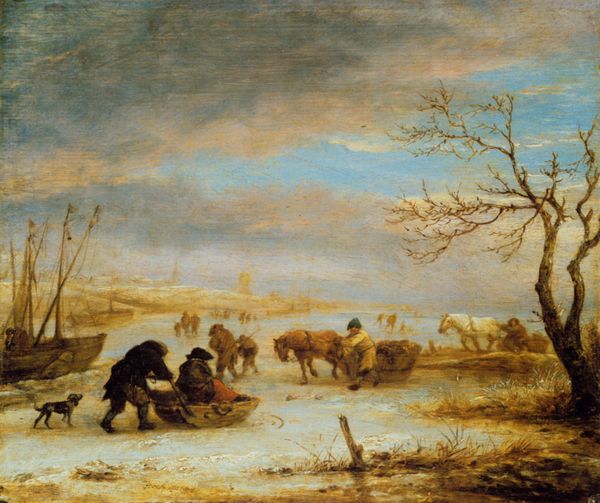
Dimensions: overall: 48.9 x 75.2 cm (19 1/4 x 29 5/8 in.) framed: 77.2 x 103.8 x 7.6 cm (30 3/8 x 40 7/8 x 3 in.)
Copyright: National Gallery of Art: CC0 1.0
Editor: This is Eastman Johnson’s "On Their Way to Camp," painted in 1873. It's an oil painting that shows three figures hauling a barrel through a snowy forest. There's a quiet sense of labor here, a connection to the land. What social narratives do you see reflected in this work? Curator: This painting, ostensibly a scene of maple sugaring, speaks volumes about labor and the land in post-Civil War America. Who do you think these figures are? Consider their dress, their activity. Editor: They seem like laborers, perhaps a family. There’s a casualness to their clothes, and they're clearly working hard. But what is striking is the notable absence of African Americans in a rural scene of the 1870's. Curator: Exactly. The Hudson River School, and American Romanticism more broadly, often obscures or erases the presence and contributions of enslaved and then recently emancipated African Americans. Ask yourself: whose labor really built the rural economy of the North? While celebrating nature, artists like Johnson participated in creating a narrative of labor which excluded Black Americans. Doesn't that influence how you read this seemingly idyllic scene? Editor: Absolutely. I initially saw it as a simple genre scene. Now, I can’t ignore who isn't there, and what that absence represents. This shift helps me realize it is important to consider that choices regarding the artist's subjects contribute to existing power dynamics. Curator: And isn't that what truly powerful art provokes— a re-evaluation of the narratives we’ve inherited? It makes us look beyond what is immediately apparent. Editor: It’s definitely given me a lot to think about – this image carries a heavy burden of silenced histories, changing how I look at other landscape paintings, too.
Comments
No comments
Be the first to comment and join the conversation on the ultimate creative platform.
